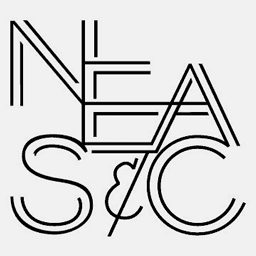Dear Shaker Road School Families,
I hope this email finds you well. It unfortunately appears that our situation will last at least through school vacation in April. Let’s hope this more extreme measure brings us back together in May.
To begin this email, I want to again thank the teachers, students, and parents for your continuing perseverance as we adapt to the new normal. In my conferences with my ninth grade advisees this morning, they reported feeling more settled than last week. While they would not choose being physically away from school and friends, they are making the best of the situation and even having a bit of fun with each other virtually.
I am keeping in close contact with the teachers and their communication with students and parents. The following is an overview of these reports. Possibly consider them “best practices” for remote learning…thus far:
- All teachers beg parents and students to carefully and completely read information they provide through emails and postings. I know there is a lot coming at you. Everything that we previously could communicate in person must now be written. It is a team effort to manage it all, but carefully reading correspondence will allow teachers to focus on teaching during the day and not responding to questions.
- Students benefit most from a routine, including a set schedule for classwork, homework, projects, exercise, and play. Much of this has been designed in the daily schedule.
- Student learning benefits from limiting distractions, including using other devices while in class (e.g. cell phones, t.v.). Parents should ensure students are focusing on class during meeting times.
- Use school resources. We know there are many different apps for learning and communicating. We have been very successful with our Microsoft Office 365 platform. Middle school has been using it successfully for years. We recognize Zoom is popular, and it is actually part of our app options in Office 365, but for now please stick with Teams and its video chat feature. This may change, but there are privacy and licensing questions to manage beforehand.
- Be patient with connectivity issues. All our families and teachers have different levels of internet service and computer options – never mind a wide range of aptitudes, so thank you for your patience as we work through all of these issues.
- Elementary teachers have reported that younger students are frequently “calling” members of the SRS network. Please keep an eye on this at home. While we want students to stay connected, calling teachers, older students, and others repeatedly and at random times does not demonstrate proper usage of the technology. A good guideline, if we would not allow a student to use our cell phones to call teachers or peers, it is probably not acceptable to do so online. Once school is over and the work is done, put the computer away and get some exercise and fresh air. I know this is crucial for my well-being.
- We are prepared to make any changes that will benefit the majority of our families but hope to limit changes unless necessary. Teachers are communicating to me what works well and any suggested changes that come their way.
I am sure that you have noticed that we use a combination of synchronous and asynchronous learning. This will vary by activity and grade level, but in general we have found that students benefit from routinely being together in class. High schools and colleges may use a more asynchronous model, but for our Shaker students, regular check-ins with teachers keeps them on track.
The daily and weekly schedule is keeping our students quite busy. When we designed this model, our goal was to have a full school day Monday through Thursday. Students report that they are busy from 8:30-3:30 with some homework. Please help us monitor the quality of work students produce. If they have too much free time during the day, it is likely they could do better work, may be missing assignments, or can work on a project. Of course, we always encourage students to spend more time reading.
Especially in Middle School, but also in some primary and elementary classes, Fridays are asynchronous academic days designed for more independent work. Students should spend Friday catching up on assignments or getting ahead, practicing musical instruments, working in groups on projects, picking up a new hobby (I have heard jewelry making is becoming popular), and a weekly required check in with teachers/advisors. So far, my Fridays have been just as busy as the other four days, and it is nice to have more unscheduled time to catch up with my advisees, fellow teachers and school families. We will continue with this model throughout the school as long as we can guarantee that students are receiving exceptional asynchronous instruction, especially our youngest students.
Finally, it is important for students to keep in touch with friends, especially if they do not have siblings at home. Students are using different methods to do this, and parents have different tolerances for social media, but it is important for students to socialize with their friends outside of school time. Student government is finalizing a couple of projects that to reach out to students, including a video and schoolwide exercise challenge. Also keep an eye out for a video from the faculty.
Again, thank you for your continued support and cooperation. When we entered this profession, none of us teachers imagined not being in classrooms with our students. Our new normal is not ideal, but we are learning a tremendous amount about our abilities as educators and the limitless potential of our students. Take care of each other and keep in touch. We are in this together.
Respectfully,


